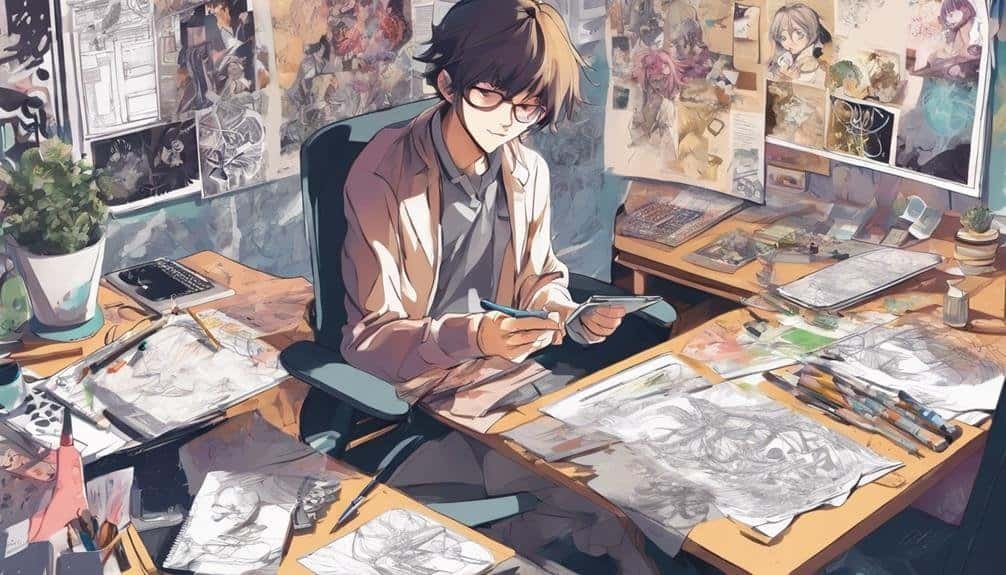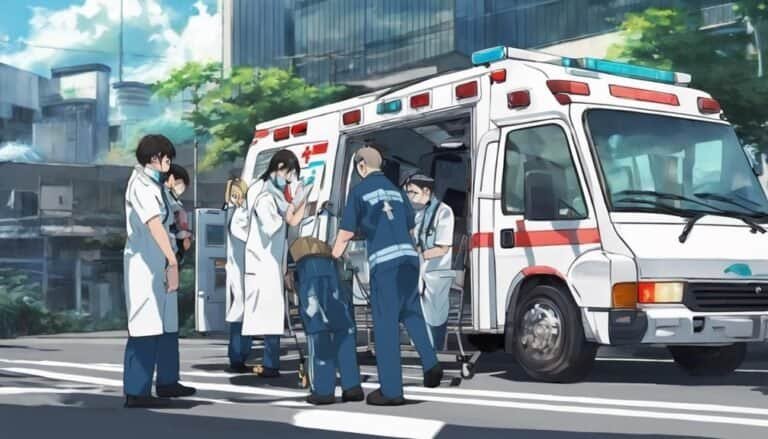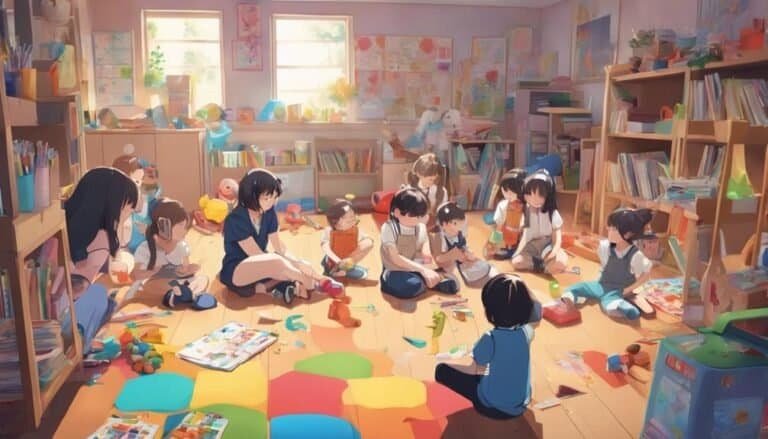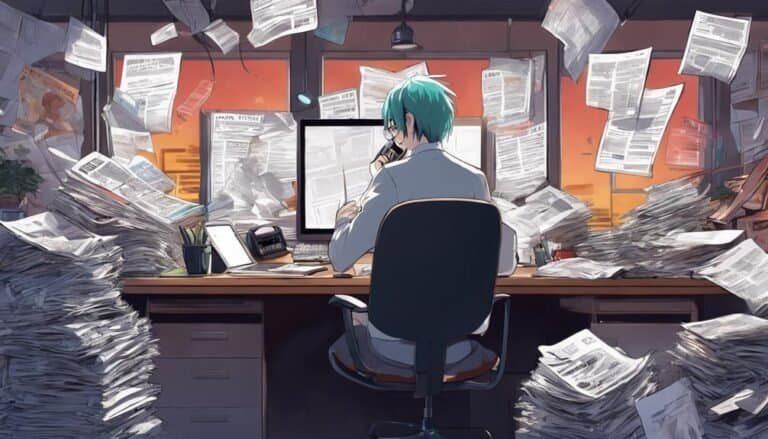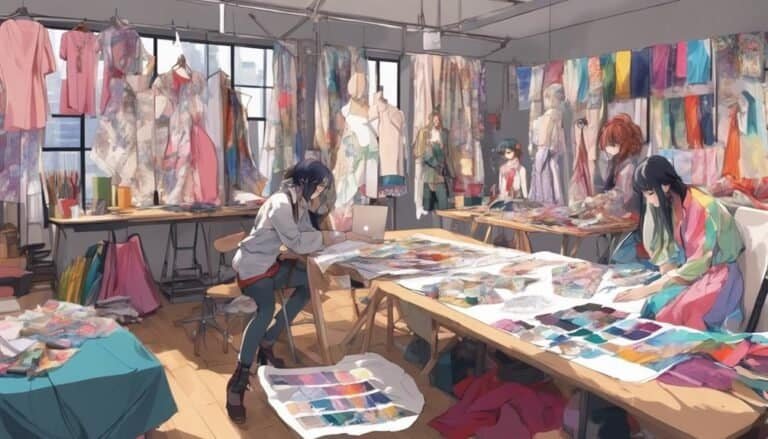Job Duties for Art Director
In the domain of creative leadership, the role of an Art Director is pivotal and essential in shaping the visual identity of a project or brand. From steering the creative direction to collaborating with design teams, an Art Director's responsibilities encompass a spectrum of tasks that require a keen eye for detail and a strategic mindset.
However, there is one significant aspect of their job that often goes unnoticed but plays a vital role in the success of any creative endeavor. This aspect involves…
Key Takeaways
- Set artistic vision and guide teams creatively.
- Manage design projects efficiently with high standards.
- Collaborate effectively to enhance creative outcomes.
- Stay updated on industry trends for innovative ideas.
Leading Creative Direction
Leading the creative direction of a project involves setting the artistic vision and guiding the team towards innovative and imaginative outcomes. As an art director, one must excel in creative brainstorming and exhibit strong artistic leadership to inspire teams towards achieving design excellence. Design inspiration is the cornerstone of this role, where the ability to infuse projects with fresh, enchanting ideas is essential for success.
Art directors are responsible for fostering an environment that encourages visual innovation. They must push boundaries, explore unconventional ideas, and challenge the status quo to deliver unique and compelling designs. By cultivating a culture of experimentation and creativity, art directors can lead their teams to create work that stands out and mesmerizes audiences.
In this role, it is vital to not only conceptualize ideas but also to effectively communicate and collaborate with team members to bring these visions to life. Through effective leadership and a keen eye for design, art directors can steer projects towards achieving artistic excellence and setting new standards in the creative industry.
Managing Design Projects
Taking charge of design projects involves orchestrating the creative process and ensuring seamless execution from inception to completion. Art directors must exhibit exceptional time management skills to meet project deadlines while maintaining high-quality standards. Efficiently allocating resources, setting realistic timelines, and prioritizing tasks are essential aspects of successful project management.
Additionally, fostering strong client relations is paramount in ensuring project success. Art directors need to effectively communicate with clients to understand their vision, requirements, and feedback. Building a positive and collaborative relationship with clients helps in aligning design concepts with their expectations, ultimately leading to client satisfaction and project success.
Collaborating With Design Teams
Art directors today are catalysts for innovative design collaborations, where diverse skills converge to create exceptional work.
Emphasizing clear and open communication channels within design teams is paramount for successful outcomes.
Teamwork for Better Designs
Effectively collaborating with design teams is essential for achieving innovative and visionary designs in the role of an Art Director. Design brainstorming sessions are vital for generating fresh ideas and pushing boundaries, while overcoming team design challenges requires collective problem-solving and creative thinking. By fostering a culture of open communication and mutual respect within the design team, an Art Director can harness the diverse skills and perspectives of team members to elevate the quality of the final product. Embracing teamwork not only enhances the creative process but also guarantees that each team member feels valued and motivated. In the table below, we highlight key aspects of teamwork for better designs:
| Teamwork for Better Designs | |
|---|---|
| Design Brainstorming | Foster creativity |
| Team Design Challenges | Enhance problem-solving |
Communication Is Key
To maximize the potential of design teams and achieve exceptional creative outcomes, fostering seamless and impactful communication channels is paramount in the role of an Art Director. Effective communication and team collaboration are the cornerstones of successful projects.
Here are five key strategies to enhance communication and collaboration within design teams:
- Encourage open dialogue and idea-sharing sessions.
- Utilize project management tools for clear task assignments.
- Conduct regular team meetings to discuss progress and address any challenges.
- Provide constructive feedback to promote growth and innovation.
- Foster a supportive and inclusive team environment to boost morale and creativity.
Developing Visual Concepts
As an Art Director, the process of Developing Visual Concepts involves:
- The innovative ideation of visual elements
- The seamless collaboration with design teams
- The meticulous development of creative briefs
This vital aspect of the role requires a visionary approach to transforming ideas into engaging visual representations, fostering a creative environment that nurtures originality and excellence.
Visual Concept Ideation
In the domain of art direction, the process of Visual Concept Ideation involves the imaginative exploration and development of visual concepts to convey a compelling and cohesive artistic vision. This phase requires a deep understanding of color psychology and design aesthetics to create visuals that resonate with the audience on a subconscious level.
Moreover, storytelling through visuals plays a pivotal role in capturing the viewer's attention and conveying complex narratives effectively. Leveraging visual storytelling techniques such as symbolism, metaphors, and composition is essential for crafting engaging and memorable visual concepts.
To excel in Visual Concept Ideation, art directors must push the boundaries of creativity and think outside the box to deliver innovative and visionary artistic solutions.
- Utilize color theory to evoke emotions
- Experiment with different design styles and aesthetics
- Incorporate symbolism to add depth to visuals
- Explore unconventional storytelling techniques
- Maintain visual consistency across all elements
Design Collaboration Process
Engage in a dynamic exchange of creative insights and ideas to foster the collaborative evolution of visual concepts in the design process. Through creative brainstorming sessions, art directors gather design feedback, allowing for a diverse range of perspectives to shape the visual direction. This collaborative approach inspires artistic inspiration and guarantees a seamless shift from concept creation to project execution. By encouraging open communication and sharing of ideas, the design team can explore innovative solutions and push the boundaries of creativity. The fusion of unique viewpoints leads to a synergy that enhances the quality and originality of visual concepts. Embracing this collaborative design process cultivates a rich environment where creativity thrives, resulting in visually stunning and impactful outcomes.
| Creative Brainstorming | Design Feedback | Artistic Inspiration | Project Execution |
|---|---|---|---|
| Encourage idea generation through group discussions | Collect input from team members and stakeholders | Draw inspiration from various sources like nature, art, and technology | Oversee the implementation of designs to make sure they meet project goals |
Creative Brief Development
Crafting a compelling creative brief serves as the cornerstone for developing visually alluring concepts that resonate with the target audience's preferences and aspirations. This critical phase involves creative brainstorming and design workshops to generate innovative ideas.
Effective client communication and project planning are essential to guarantee the visual concepts align with the client's vision and goals. To excel in creative brief development, art directors must possess strong collaboration skills and an ability to extract key information from clients.
By conducting thorough research and analysis, art directors can identify trends and insights that inform the visual direction of the project. Embracing a strategic approach, art directors can transform abstract ideas into impactful visual representations.
- Utilize creative brainstorming and design workshops
- Enhance client communication and project planning
- Conduct thorough research and analysis
- Extract key information from clients
- Embrace a strategic approach to visual concept development
Presenting Ideas to Clients
When presenting ideas to clients as an art director, it is essential to captivate their attention with a compelling vision that aligns with their objectives. Effective client communication and design pitches are vital aspects of this process. As an art director, you must showcase your creativity and strategic thinking while ensuring that your ideas resonate with the client's needs. Below is a table highlighting key strategies for presenting ideas to clients:
| Key Strategies for Presenting Ideas to Clients | Description | Benefits |
|---|---|---|
| Understand Client Needs | Conduct thorough research on the client's brand and requirements. | Tailor ideas to meet specific client goals. |
| Visual Prototyping | Create mock-ups or prototypes to visually represent your ideas. | Helps clients visualize the final product. |
| Storytelling Pitch | Develop a narrative around your designs to engage and inspire clients. | Makes ideas more memorable and impactful. |
| Interactive Presentations | Use interactive tools or presentations to make the pitch more engaging. | Encourages client participation and feedback. |
| Addressing Feedback | Listen actively to client feedback and incorporate relevant suggestions. | Builds trust and strengthens client relationships. |
Ensuring Brand Consistency
Consistently aligning visual elements, messaging, and design choices with the established brand guidelines is paramount for an art director to maintain brand consistency across all creative deliverables. In ensuring brand consistency, an art director plays a critical role in upholding the brand identity and design consistency. This involves harmonizing visual aesthetics to achieve brand cohesion.
To achieve this effectively, art directors can:
- Conduct regular brand guideline workshops to educate team members.
- Implement a centralized asset management system for easy access to approved brand elements.
- Collaborate closely with the marketing team to align creative strategies with brand objectives.
- Create mood boards and style guides to visually communicate the brand's essence.
- Perform regular audits on creative materials to identify and rectify any deviations from brand guidelines.
Overseeing Production Processes
To streamline the creative workflow and guarantee efficiency, the art director takes on the role of overseeing production processes with a focus on optimizing resources and meeting project deadlines. This involves securing production efficiency by implementing process improvements and providing artistic direction throughout the project lifecycle. By merging a keen creative vision with a strategic mindset, the art director plays a pivotal role in guiding the team towards successful project completion.
The art director's responsibility in overseeing production processes goes beyond just managing tasks; it extends to fostering a collaborative environment that encourages innovation and excellence. They work closely with designers, copywriters, and other creative professionals to secure that the project stays true to the initial concept while continually seeking ways to enhance the final output.
Through their leadership and expertise, art directors drive the team towards achieving high-quality results while adhering to timelines and budget constraints. Their ability to balance creative freedom with project requirements makes them instrumental in bringing artistic visions to life in a structured and efficient manner.
Staying Updated on Industry Trends
In order to maintain a cutting-edge approach in the dynamic field of creative direction, the art director actively engages in staying abreast of emerging industry trends. By immersing themselves in the ever-evolving landscape of design and creativity, art directors can guarantee their work remains fresh, relevant, and impactful.
Here are five key strategies art directors employ to stay updated on industry trends:
- Industry Insights: Attending conferences, seminars, and workshops to gain valuable insights into the latest developments within the creative industry.
- Creative Inspiration: Seeking inspiration from a wide range of sources such as art exhibitions, cultural events, and technological innovations to fuel their creative vision.
- Trend Forecasting: Analyzing market research, consumer behavior, and emerging cultural shifts to anticipate future design trends.
- Design Evolution: Experimenting with new techniques, technologies, and materials to push the boundaries of traditional design practices.
- Networking: Building connections with other industry professionals, thought leaders, and influencers to exchange ideas and stay informed about the latest trends and opportunities.
Providing Constructive Feedback
Utilizing a discerning eye and strategic approach, art directors excel in offering insightful and constructive feedback to enhance creative projects. Art directors employ various feedback techniques to provide constructive criticism that fosters growth and development within their teams. Through effective communication and artistic critique, they guide team members towards improving their work while also recognizing and encouraging their strengths. By conducting performance evaluations, art directors can pinpoint areas for improvement and offer tailored feedback that motivates individuals to aim for excellence.
In providing constructive feedback, art directors aim to cultivate a positive and collaborative work environment where team members feel valued and inspired. They understand the importance of balancing constructive criticism with positive reinforcement to nurture creativity and boost team motivation. By acknowledging achievements and offering guidance for improvement, art directors empower their teams to reach new heights of artistic excellence. Through their visionary leadership and dedication to fostering talent, art directors play an important role in elevating creative projects and driving success within their organizations.
Conclusion
To summarize, the job duties of an art director encompass:
- Leading creative direction
- Managing design projects
- Collaborating with design teams
- Developing visual concepts
- Presenting ideas to clients
- Ensuring brand consistency
- Overseeing production processes
- Staying updated on industry trends
- Providing constructive feedback
As the saying goes, 'A picture is worth a thousand words,' emphasizing the importance of visual communication in the role of an art director.

